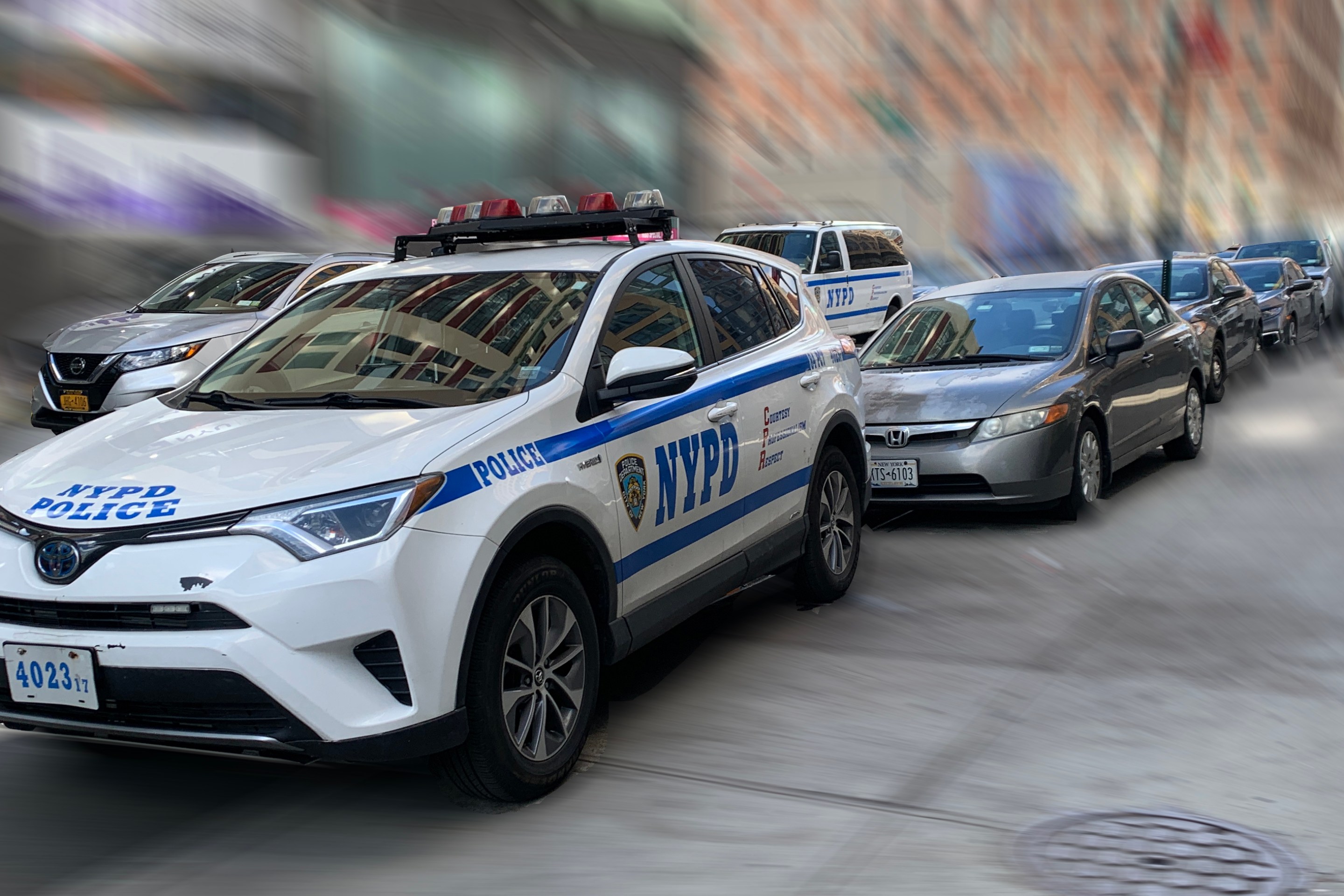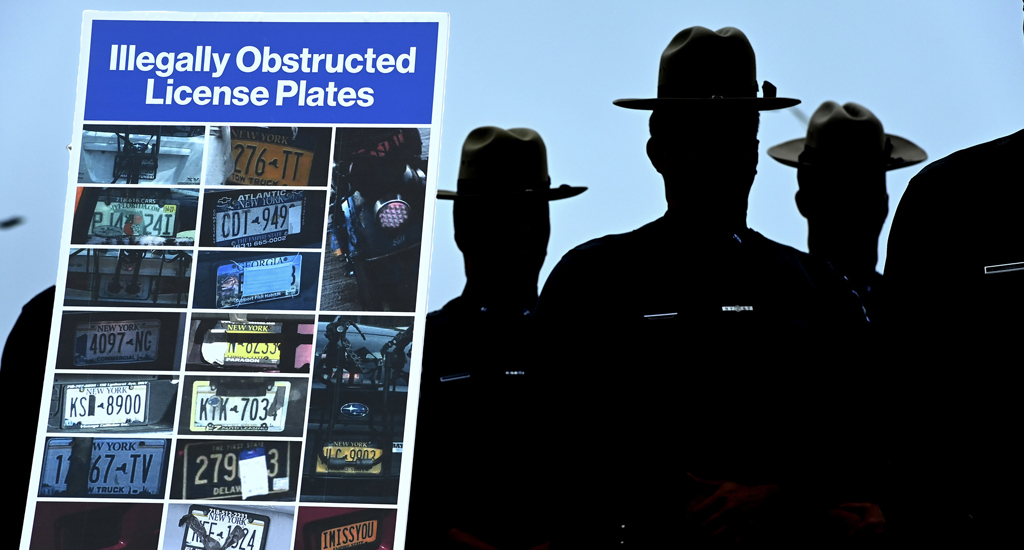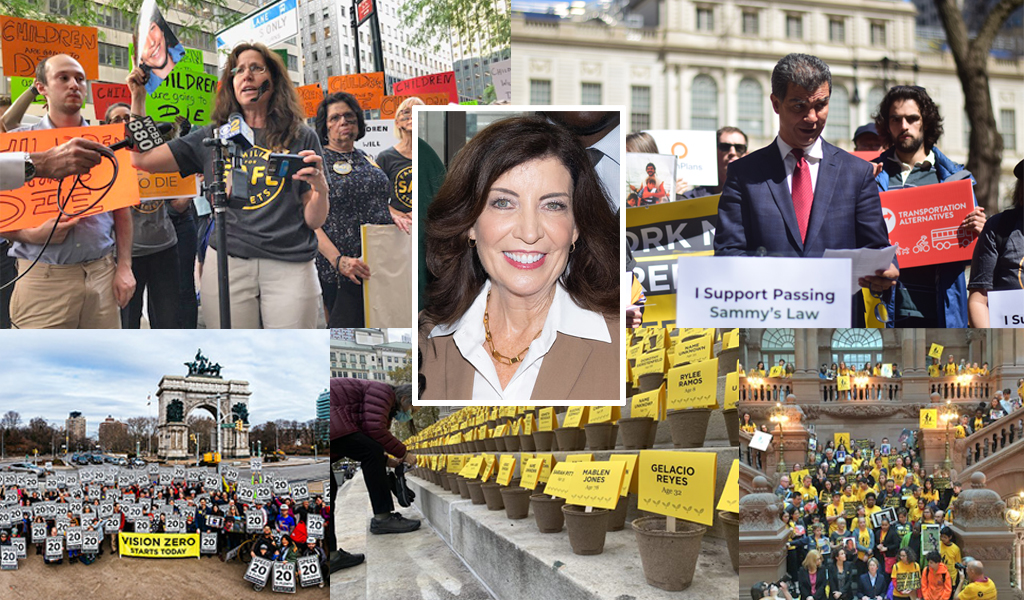Gridlock Sam on Traffic, Tolls, and Big Ideas for NYC Transpo Policy
4:21 PM EST on March 9, 2012
New York City is coming up on the four year anniversary of a moment that will live in infamy for transit riders and sustainable transportation advocates: the demise of congestion pricing, which was put down in the state Assembly without a vote on April 7, 2008. The city lost a great opportunity that day to fund its transit system while relieving the city's most congestion-choked streets from suffocating traffic.
Road pricing has been hibernating since a plan to toll crossings into Manhattan was narrowly defeated in the State Senate in 2009. But last Sunday former New York Times editor-in-chief Bill Keller put it squarely in the public eye again, featuring the latest plan from the city's best-known transportation engineer, "Gridlock" Sam Schwartz.
The basic bargain in Schwartz's plan boils down to this: Motorists pay more to enter the most congested part of the region, and pay less to travel between the boroughs outside Manhattan. He's also added a slate of fees so Manhattanites pay more into the system, and a menu of infrastructure projects ranging from widening the Staten Island Expressway to building three new bike and pedestrian bridges into Manhattan.
The plan aims to produce both broad-based benefits and broad-based sacrifice. While the package would be a huge improvement over New York's dysfunctional road pricing system and result in a major infusion of revenue for the financially troubled MTA, the grab bag of spending is hit or miss. Unlike the 2008 congestion pricing plan, which was supposed to be paired with surface transit improvements and shift trips away from driving all over the city, Schwartz's plan would induce traffic in some areas outside Manhattan.
Schwartz is constantly refining the plan as he takes it to different constituencies. Here's a look at the major pieces in the current version of the plan, which is up on the Sam Schwartz Engineering website [PDF] (note: it's a little different than the summary we posted on Wednesday):
- $5 E-ZPass/$7 cash fee to drive into and out of the congested heart of Manhattan
- $5 roundtrip reduction in tolls on the Verrazano, Triborough, Throgs Neck, and Whitestone bridges
- $2 roundtrip reduction in tolls on the Cross Bay and Marine Parkway bridges, which connect the Rockaway peninsula to the mainland.
- End the parking tax rebate for Manhattan residents, who currently pay about half the tax rate on car storage compared to residents of other boroughs.
- $1 drop fee on yellow cab trips in the Manhattan CBD, with cabbies keeping part of the revenue.
- Reduced express bus fares for residents far from Manhattan.
- New elevated busways built over the median, Airtrain-style, on the Bruckner, the Long Island Expressway, and the Belt Parkway.
- Widening the Staten Island Expressway and the Van Wyck approach to JFK.
- Widening the Belt Parkway and allowing commercial traffic so fewer trucks are on local streets.
- Building three new bike and pedestrian bridges into the Manhattan CBD, one from Hoboken/Jersey City, one from Red Hook via Governor's Island, and one from Greenpoint/Long Island City.
- Investment in MTA maintenance and capital improvements (specific dollar amount TBD, but it would be more than the amount spent on road projects).
According to Charles Komanoff's Balanced Transportation Analyzer, Schwartz's plan would raise a net of $1.26 billion annually, reducing the number of vehicles entering the Manhattan CBD each weekday by 21 percent, while increasing the number of people entering by 3.3 percent. The revenue would be bonded, allowing for up to $15 billion in borrowing that would be spent on transit investment, the roadway projects in Schwartz's plan, and infrastructure maintenance.
I spoke to Schwartz this morning about how he's been adjusting his plan over the last four years. Below are edited highlights from the interview.
I’ve been quietly making the rounds to leaders in the business community, the real estate community, and elected officials, spending more time with congestion pricing opponents. They brought up that the boroughs were paying the bulk, and there was little burden on Manhattanites south of 86th Street. The earlier version of the Bloomberg plan actually gave a discount to Manhattanites within the congestion pricing zone. [Editor's note: a later version of the plan, which reached the state Assembly, shifted the northern boundary of the zone to 60th Street and had no discount.]
To me this made no sense. If you own a car in Manhattan, you’re not poor. South of 86th Street, the vast majority are probably in the 1 or 2 percent. Everybody’s gotta kick in, everybody’s gotta be a little bit angry with this plan.
I end the parking tax rebate that Manhattanites get now. Here we are giving an enormous tax rebate to the wealthiest people in the city.
Also, I hate doing this because I’m a former cab driver, but I do a $1 surcharge on trips south of 86th street. I think some of that should go to the cab drivers.
If any of your readers can come up with other ways Manhattanites can pay, let me know.
On the escalating difference between the price of MTA bridges and the free East River bridges:
We could be up to $25 roundtrip by 2020 and $50 by 2030. We’ve had doublings and triplings in a decade. That’s not unusual.
My reductions on the major MTA bridges are $5 roundtrip. The Gil Hodges and Cross Bay are $2 roundtrip reductions.
On transit improvements for residents in auto-oriented NYC:
About year and half ago they ended a lot of local bus service, and what I kept hearing in the Mill Basins and Little Necks is, "We don’t ride subways as much, but we do ride buses." Reduce bus fares by $1 in neighborhoods with limited transit access. The MTA would also have to agree to no service reductions for three years without community board approval.
On spending some of the revenue to build roads:
One of the things for the pro-congestion pricing groups in the past was the money all went to transit. I’m saying some of the money should go to highway improvements. We can’t ask all the money to come from motorists and give them nothing in return. That’s not sufficient to get the electeds from the suburbs and outer boroughs. Some of the money has to go to road building.
We have to do something for the routes that will pick up the traffic. The Staten Island Expressway is sensitive to the East River bridges. Widen the Staten Island Expressway. I make the Belt an expressway and allow trucks on. On Linden Boulevard you have a lot of kids getting killed by trucks. This gets trucks off local streets.
Building new bike-ped infrastructure:
After Christie killed ARC, that meant no more transit access into the middle of Manhattan. When I look at where younger people are living, they’re along the waterfront in Brooklyn and Queens, and it’s being mirrored in Hoboken and Jersey City. Maybe we can’t build a subway in 20 years, but we can build these bridges for about $250 million a bridge, including land.
The first is from Red Hook to Governor's Island to Lower Manhattan. There would be a tri-borough bridge from Greenpoint to Hunter’s Point to Manhattan. I want people to dream, I want people to think. The last bridge to the CBD that we built was in 1909, 103 years ago.
The other bridge is along the Hoboken/Jersey City border. Set aside $250 million per bridge. Bike riders would pay a buck, tourists would pay something. On these bridges you’ll have none of the traffic and noise. It could be a system with no gates, as much on the honor system as possible, like SBS-style proof-of-payment enforcement.
What if we had the same thing across the East River bike/ped paths? When I’ve gone out to some of the Brooklyn and Queens electeds, and they all said to me, "The day I’ll support this is when bikes pay to go into Manhattan." It does cost money to maintain the bikeways. In the eighties there were four staircases on the Brooklyn Bridge. It cost money to remove them. If we want cars to pay, I’d like peds and bikes to pay. In the old days we charged both bikes and peds. At a dollar, the bridges could maintain themselves.
On how to spend the revenue for transit:
One thing is certain, as I’ve made the rounds, is that the money should not go to fare reductions. With the MTA, it should go to maintenance of high-quality service – modern signal systems, capital improvements.
Schwartz is especially interested to hear from Streetsblog readers about the idea of tolls on biking and walking over bridges.
Not to poison the well, but I would rather see the bike-ped bridges dropped from the plan instead. It's one thing to sweeten the pot for pols who want to bring home the bacon for their car-driving constituents; it's another to start adding costs for efficient, pollution-free modes that the city should be encouraging.
Stay in touch
Sign up for our free newsletter
More from Streetsblog New York City
Tuesday’s Headlines: Valley of Political Death Edition
Did you see the new poll showing congestion pricing is really unpopular? Ignore it! Good times are coming. Plus other news in today's headlines.
Open Streets Groups Warn of Extra Red Tape to Run Events
Two weeks notice for hopscotch or a yoga class?
Monday’s Headlines: A Federal Case over Parking Edition
We're flicking our bicycle bell over a big scoop last week that no one picked up on...yet. Plus other news.
Hochul, Legislators Reach Toll Evasion Crackdown Deal
Higher fines for covering a plate and for not paying tolls are part of the budget deal inked on Saturday.
Behind the Scenes: How Gov. Hochul Got ‘Sammy’s Law’ Over the Finish Line
Opponents didn't want to put their name on a no vote for the life-saving measure.





